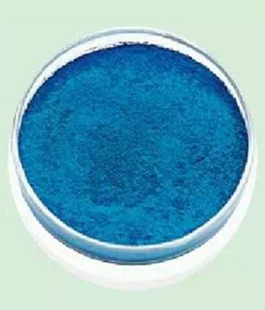
OUR PRODUCT DETAIL
Gardenia blue
It’s a kind of blue powder, almost odorless, easily soluble in water, hydrous ethanol and aqueous propylene glycol; bright-blue in color. There is no change in tonality when PH values 3 ~ 8; heat-resistant and the color does not fade at 120 ℃ for 60min.
-

Chinese name: Gardenia blue pigment
English name: Gardenia blue pigment
Category: food additive, food coloring, color fixative
-

It’s a kind of blue powder, almost odorless and tasteless; easily soluble in water, hydrous ethanol and aqueous propylene glycol; bright-blue in color. There is no change in tonality when PH values 3 ~ 8; heat-resistant and the color does not fade at 120 ℃ for 60min. It has weak hygroscopicity and light resistance,but strong dyeing power against protein, with absorbance (1000 times diluted aqueous solution, 590nm) of 0.5. Technological process: take geniposide-a chemical composition in Rubiaceae plant-gardenia as the raw material, and obtain genipin by stripping of glucosyl group at the end of geniposide molecular under the effect ofβ-1,4-glucosidase ((EC3.2.1.21). Then, through a series of polymerization and rearrangement reaction between genipin and amino acid, gardenia blue pigment can be derived after final drying. The flow is as follows: Cellulase → Enzyme solutions→ Geniposide enzymolysis →Genipin→Amino acid polymerization → Gardenia blue pigment solution → Ultrafiltration (UF) →Freeze drying → Gardenia blue pigment powder.
-

Mainly used as a food coloring in confectioneries, beverages, jams, etc., and can be used together with other natural pigments. Besides, it may be added to cosmetics due to its safety.